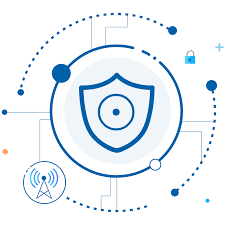Securing the Future: Exploring 5G Cybersecurity Solutions
As 5G technology rapidly expands across the globe, it promises to revolutionize industries, enhance connectivity, and create new opportunities. However, with these advancements come significant cybersecurity challenges. Protecting 5G networks from cyber threats is paramount to ensuring the security and reliability of this transformative technology. In this blog, we delve into the critical aspects of 5G cybersecurity solutions and their importance in safeguarding our digital future.
Understanding the Unique Cybersecurity Challenges of 5G
5G networks differ significantly from their predecessors in terms of architecture, functionality, and capabilities. These differences introduce unique cybersecurity challenges:
Increased Attack Surface: The proliferation of connected devices, IoT applications, and edge computing expands the attack surface, making networks more vulnerable to cyber threats.
High-Speed, Low-Latency Requirements: The speed and low latency of 5G networks require real-time security measures that can detect and mitigate threats without compromising performance.
Network Slicing: 5G enables network slicing, which allows the creation of multiple virtual networks on a single physical infrastructure. While beneficial, it also poses security risks if slices are not adequately isolated and protected.
Diverse Use Cases: 5G supports a wide range of applications, from autonomous vehicles to smart cities. Each use case has unique security requirements, demanding tailored cybersecurity solutions.
Key 5G Cybersecurity Solutions
To address these challenges, a multi-faceted approach to 5G cybersecurity is essential. Here are some of the key solutions:
Advanced Encryption: Implementing strong encryption protocols ensures that data transmitted over 5G networks remains confidential and secure. End-to-end encryption protects data from interception and unauthorized access.
Network Slicing Security: Each network slice must be individually secured to prevent cross-slice attacks. This involves isolating slices, enforcing strict access controls, and continuously monitoring for suspicious activity.
AI and Machine Learning: Leveraging artificial intelligence and machine learning enhances threat detection and response. These technologies can identify patterns and anomalies in real-time, enabling proactive threat mitigation.
Zero Trust Architecture: Adopting a Zero Trust approach ensures that no user or device is trusted by default, regardless of whether they are inside or outside the network. Continuous verification and strict access controls are enforced.
Edge Security: As 5G relies heavily on edge computing, securing edge devices and infrastructure is crucial. This includes implementing robust security measures for edge devices and ensuring secure communication between the edge and the core network.
Multi-Layered Defense: Employing a multi-layered defense strategy provides comprehensive protection. This includes firewalls, intrusion detection and prevention systems (IDPS), and security information and event management (SIEM) systems.
Regulatory Compliance: Ensuring compliance with industry standards and regulations, such as GDPR and CCPA, is vital. This involves regular security audits, risk assessments, and adherence to best practices.
The Importance of Collaboration and Standardization
Addressing 5G cybersecurity challenges requires collaboration among stakeholders, including network operators, device manufacturers, regulators, and cybersecurity experts. Standardization efforts, such as those led by the 3rd Generation Partnership Project (3GPP) and the International Telecommunication Union (ITU), play a critical role in establishing common security frameworks and guidelines.
Conclusion
As 5G technology continues to evolve, so must our approach to cybersecurity. Implementing robust 5G cybersecurity solutions is essential to protect the integrity, confidentiality, and availability of 5G networks. By addressing the unique challenges posed by 5G, we can ensure a secure and resilient digital future, unlocking the full potential of this transformative technology. Stay vigilant, stay secure, and embrace the future of connectivity with confidence.




Comments
Post a Comment